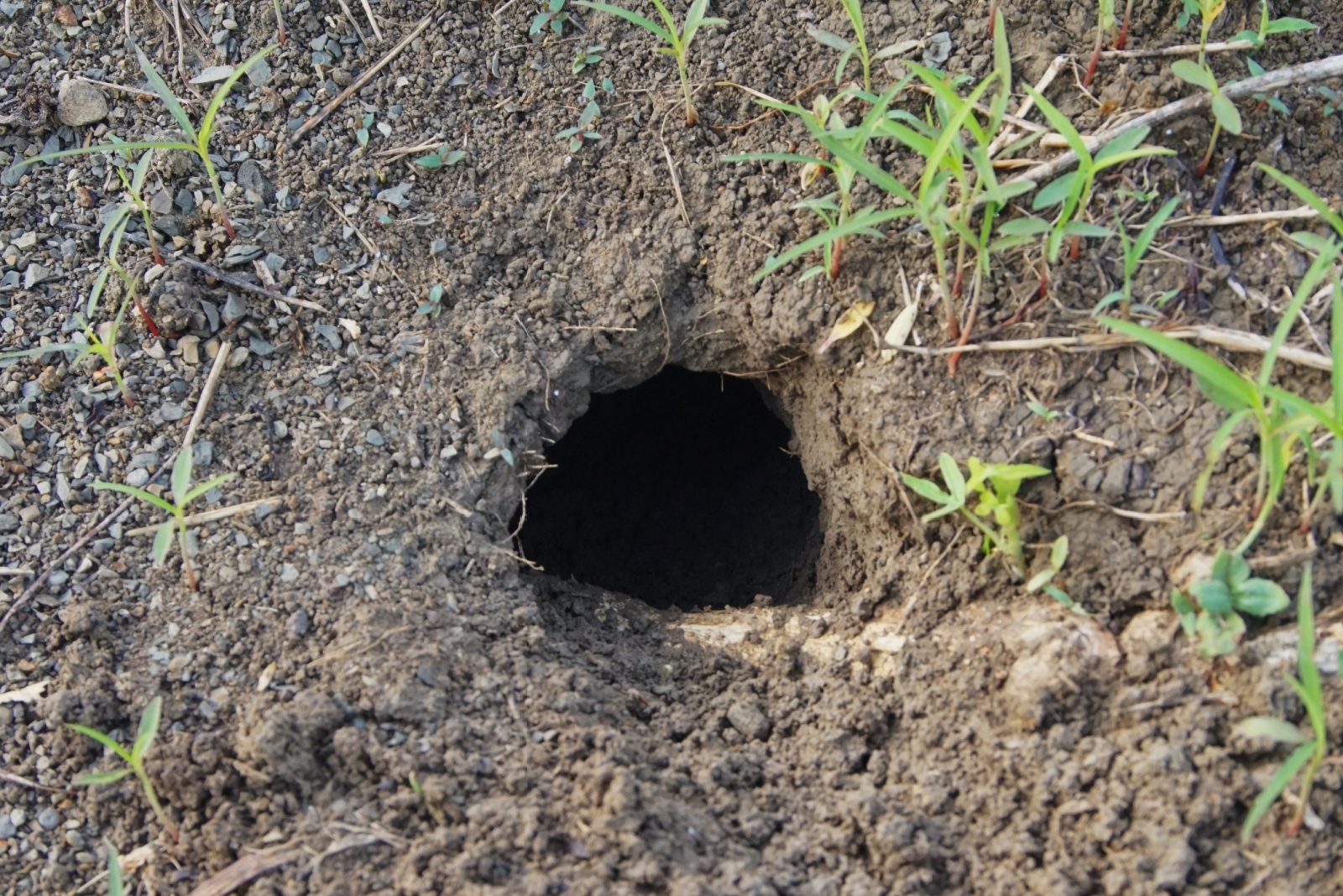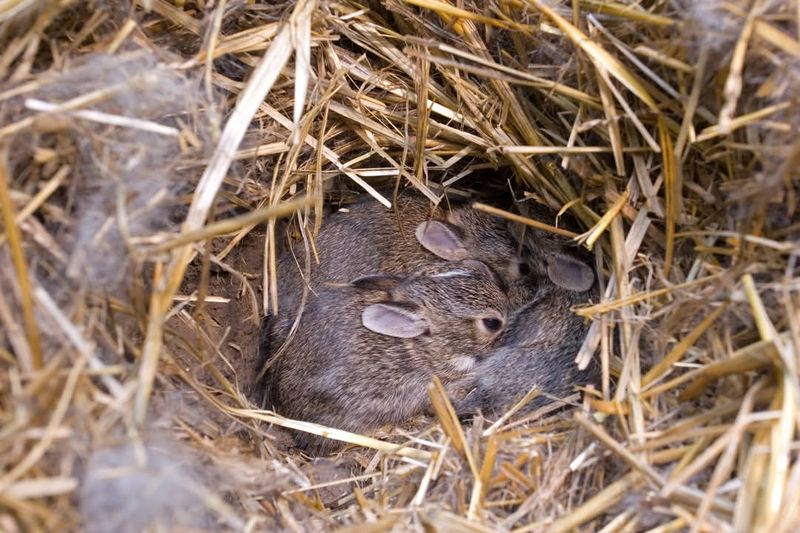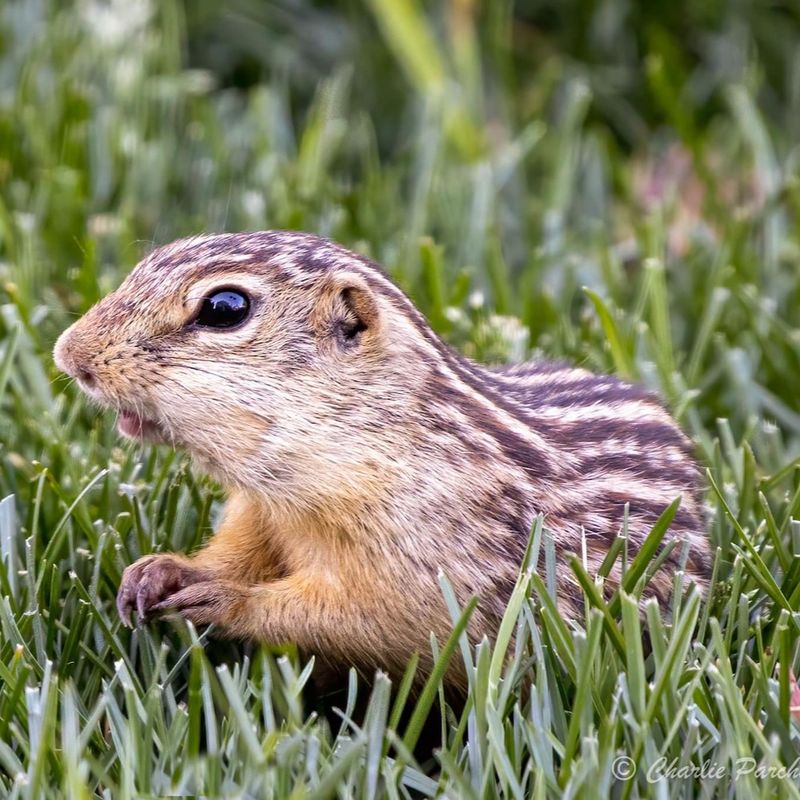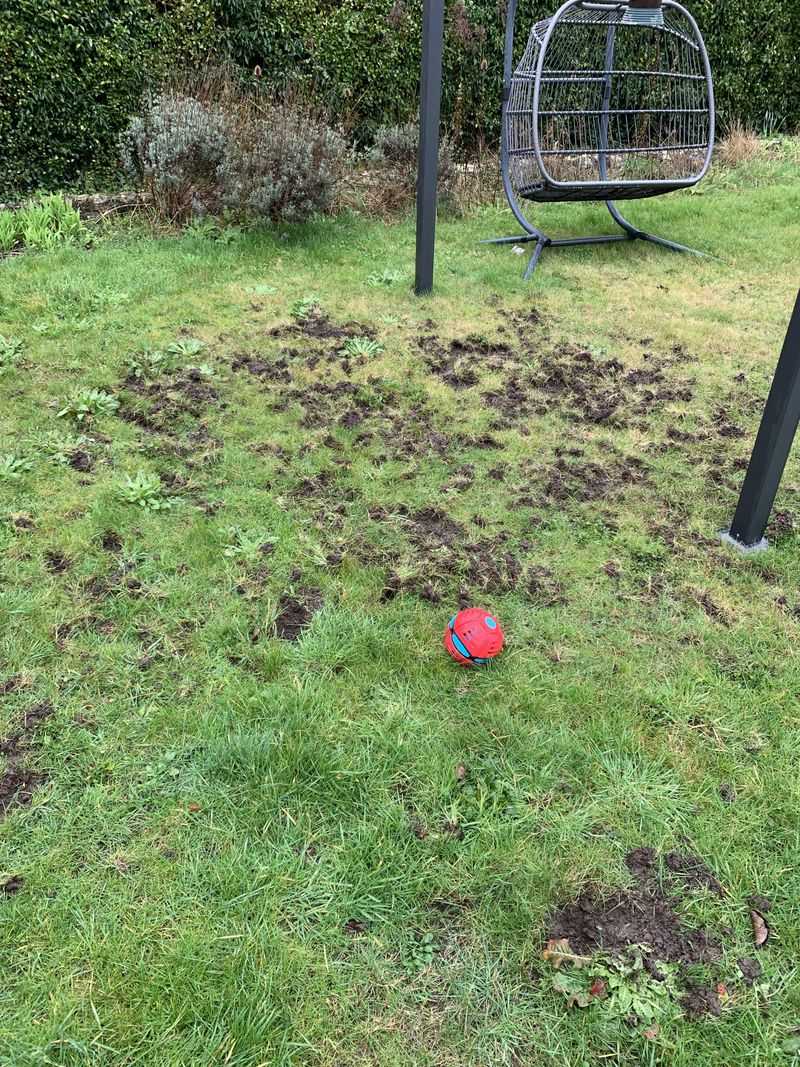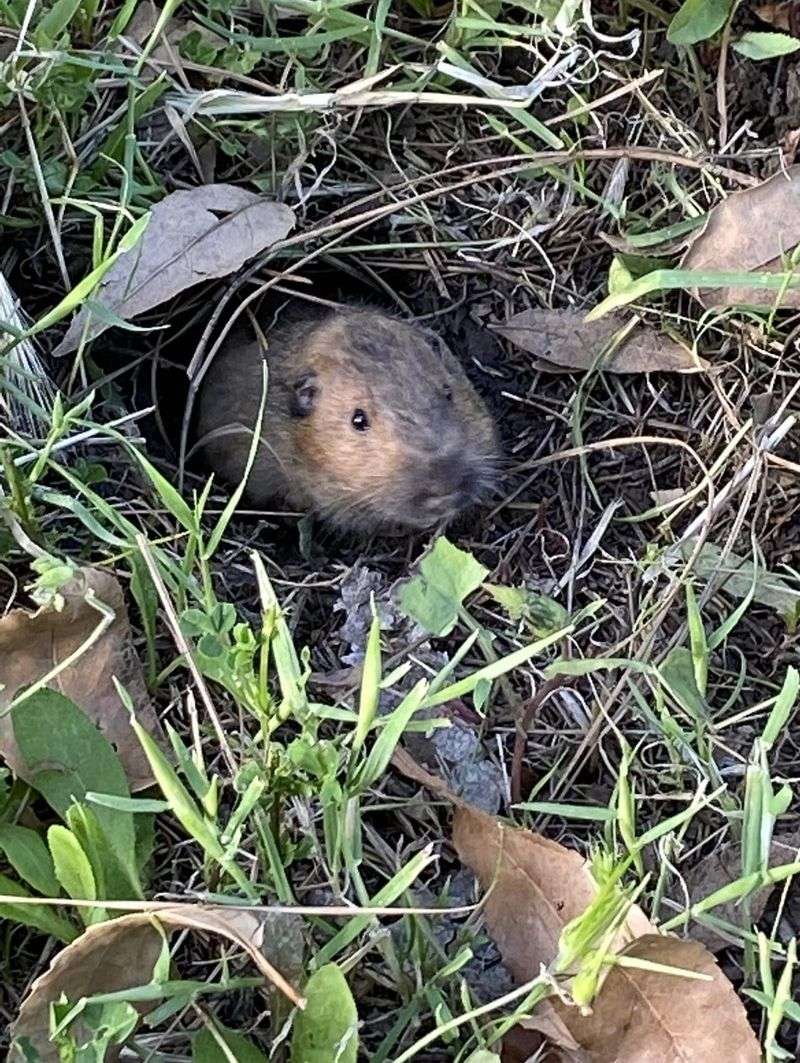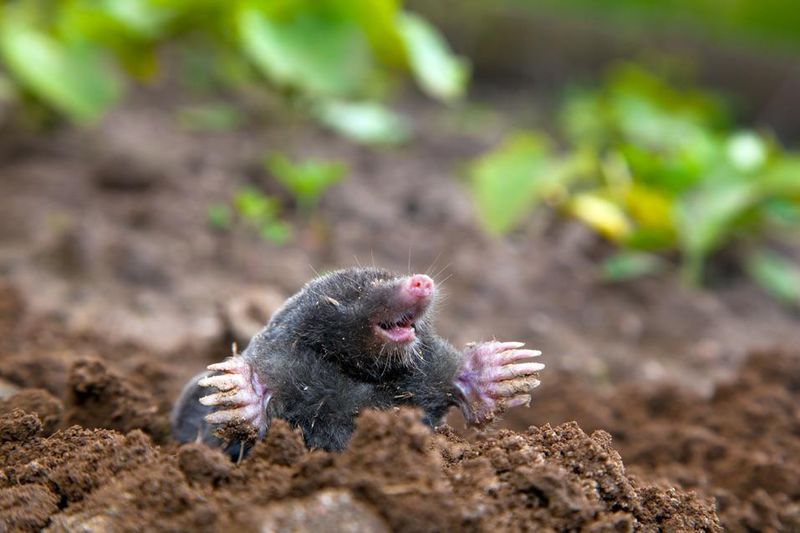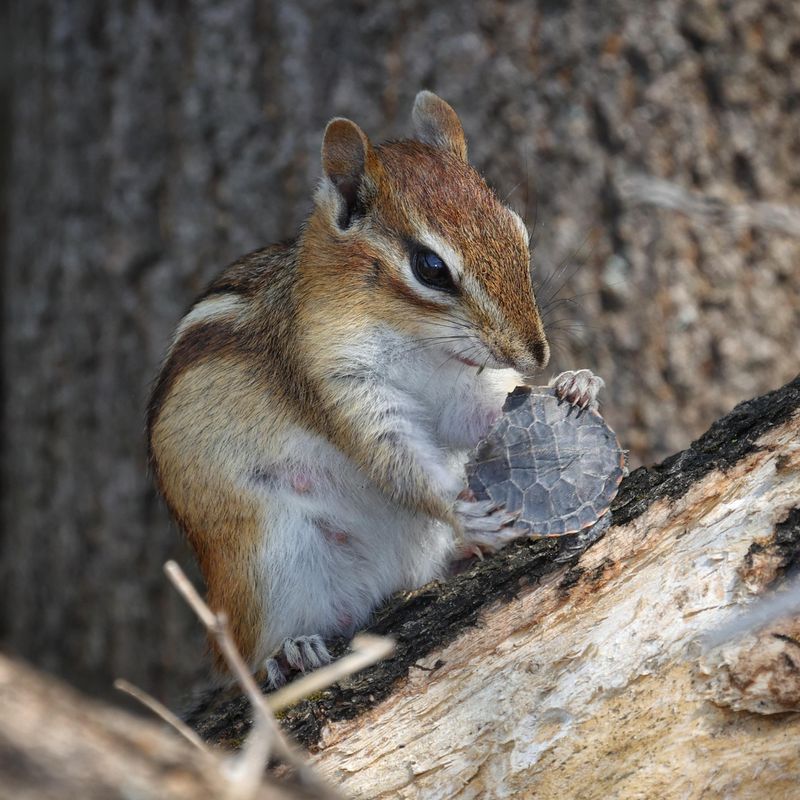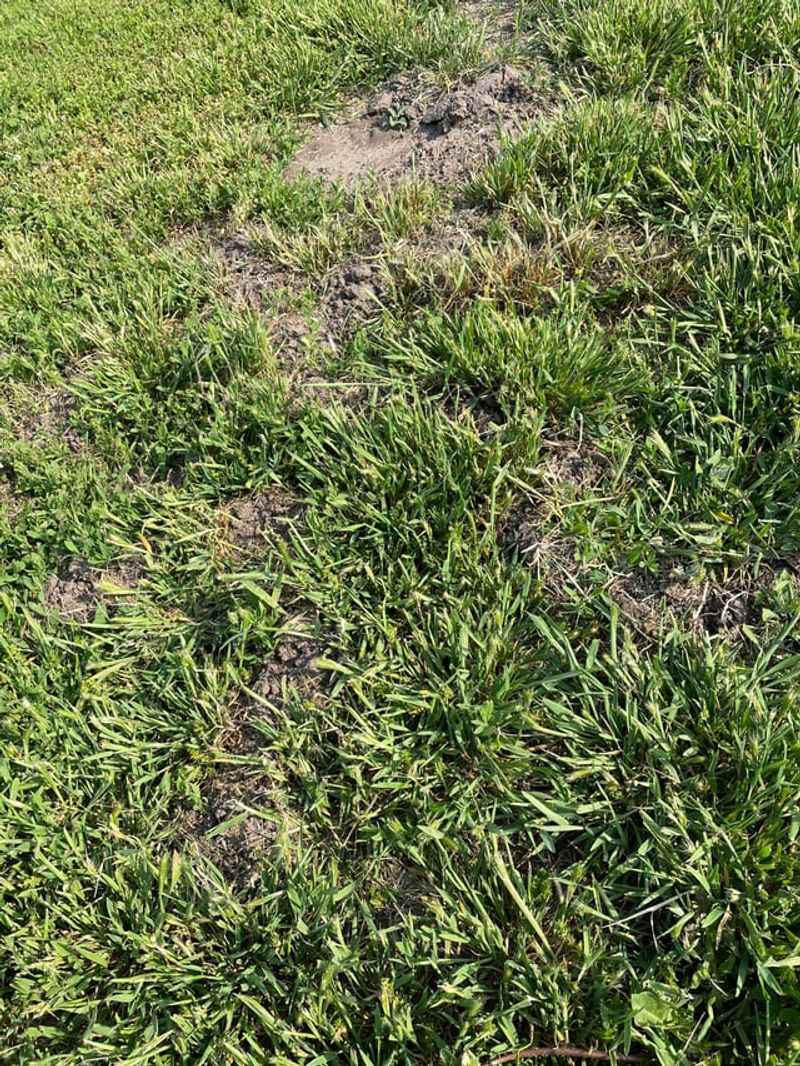Ever noticed a strange hole in your Nebraska backyard and wondered what’s living down there? You’re not alone—plenty of critters dig underground for shelter and safety. From rabbits to moles, these burrowers are part of the local ecosystem.
But knowing who’s behind the digging can help you protect your lawn without harming wildlife. I’ve seen homeowners strike a balance between keeping their yards tidy and respecting nature’s rhythms. A little knowledge goes a long way in coexisting with these underground neighbors.
1. Cottontail Rabbits Love Shallow Nests
Spotting a small, bowl-shaped depression in your grass? Cottontail rabbits create these shallow nests to raise their babies during spring and summer. The holes measure about four to five inches wide and just a few inches deep, often lined with soft fur and dried grass.
Mother rabbits visit only twice daily to feed their young, so don’t worry if the nest looks abandoned. These gentle creatures prefer quiet corners of your yard away from heavy foot traffic.
2. Ground Squirrels Build Complex Tunnel Systems
Nebraska’s thirteen-lined ground squirrels are expert diggers who construct elaborate underground homes. Their entrance holes typically measure two inches across and drop straight down before branching into multiple chambers.
Look for scattered dirt mounds near the opening, which these busy rodents push out while excavating. Ground squirrels prefer sunny, well-drained areas with short grass where they can easily spot predators. During winter months, they hibernate deep within their burrows until spring warmth returns.
3. Badgers Create Massive Excavation Sites
When you find a hole big enough to fit a football, you might have a badger den nearby. These powerful diggers create entrances measuring eight to ten inches wide, surrounded by huge piles of excavated soil.
Badger burrows often feature elliptical openings rather than perfect circles. Fresh claw marks and tracks around the entrance confirm recent activity. While badgers are solitary and mostly nocturnal, they’re incredibly strong animals that deserve respectful distance from curious homeowners.
4. Pocket Gophers Leave Telltale Dirt Fans
Notice crescent-shaped dirt mounds scattered across your lawn? Pocket gophers push soil to the surface while tunneling underground, creating distinctive fan-shaped piles. Unlike mole hills, gopher mounds have a plugged hole off to one side rather than in the center.
These solitary rodents rarely come above ground, spending most of their lives in extensive tunnel networks. A single gopher can create dozens of mounds throughout your yard while searching for roots and vegetation to eat.
5. Skunks Repurpose Abandoned Burrows
Finding a musky smell near a hole under your deck or shed? Skunks rarely dig their own burrows, preferring to move into abandoned dens created by other animals. They choose locations under structures, rock piles, or hollow logs for added protection.
Entrance holes measure four to six inches across, often with scattered leaves or grass near the opening. Skunks are generally peaceful neighbors who help control insect populations, though their defensive spray makes close encounters unpleasant.
6. Moles Produce Volcano-Shaped Hills
Symmetrical, cone-shaped mounds appearing overnight signal mole activity beneath your lawn. Unlike gopher mounds, mole hills form a circular volcano shape with the entrance hole centered at the top. These insect-eating mammals create shallow surface tunnels that feel spongy when you walk across them.
Moles work constantly, pushing up fresh dirt as they hunt for earthworms and grubs. While their tunneling can damage grass roots, moles actually benefit soil by improving drainage and aeration.
7. Chipmunks Maintain Hidden Entrances
Chipmunks are sneaky architects who keep their burrow entrances surprisingly clean and inconspicuous. Their holes measure about two inches across with no dirt pile nearby, as these clever rodents carry excavated soil away in their cheek pouches.
Look for entrances hidden under rocks, logs, or dense vegetation near your home’s foundation. Chipmunk burrows extend several feet underground, featuring multiple chambers for sleeping, storing food, and raising young during summer months.
8. Voles Create Surface Runways
Discovering narrow trails through your grass with small holes along the path? Voles create extensive surface runway systems connecting multiple burrow entrances. These openings measure just one to two inches wide, often partially hidden by overhanging grass.
Voles stay active year-round, even tunneling beneath snow during winter. Their runway systems become more visible in early spring when snow melts, revealing networks of pathways crisscrossing your yard where these small rodents traveled while foraging for seeds and plant material.

